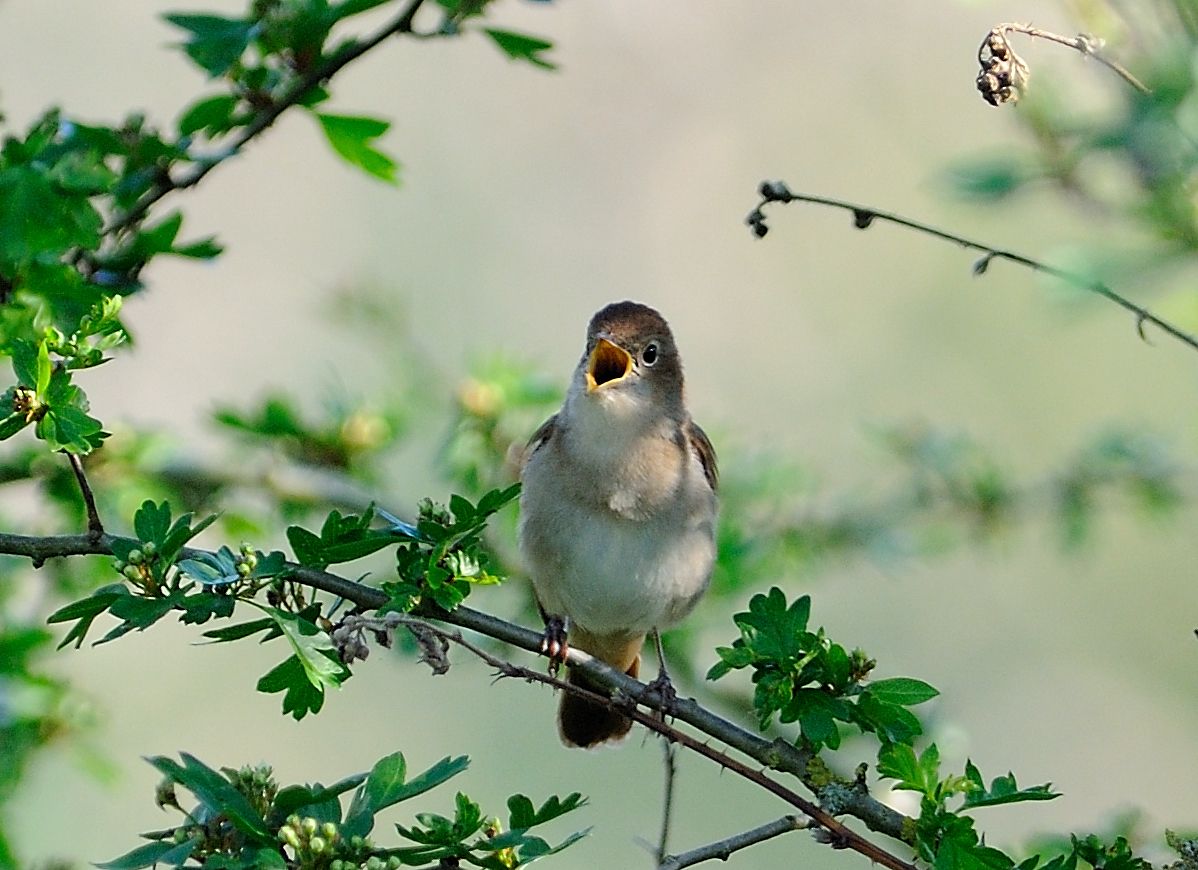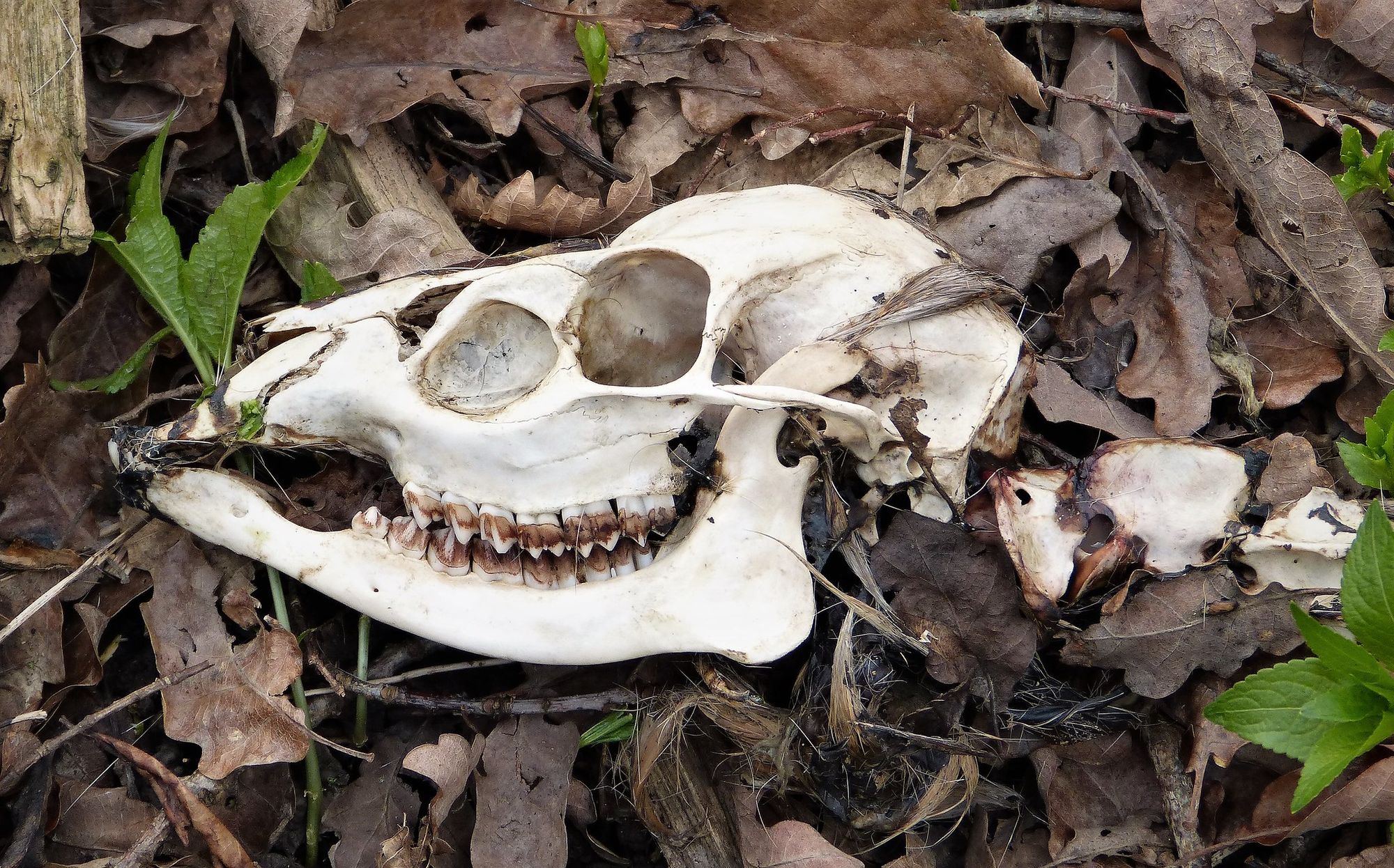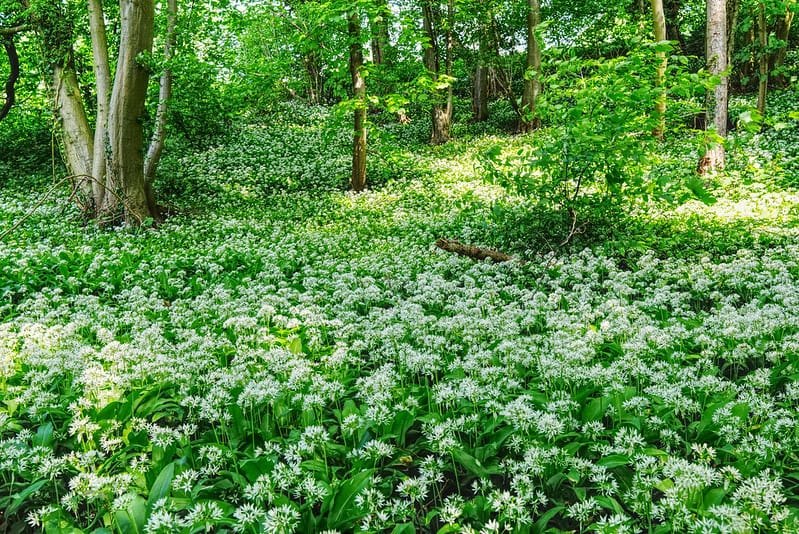
'You've got to be pretty ruthless': Why the future of nightingales depends on deer hunters
The introduction of muntjac deer to the UK in the 20th century has contributed to declines in woodland birds. Patrick Galbraith joins a hunter trying to keep numbers under control.
This feature is an extract from In Search Of One Last Song: Britain’s Disappearing Birds and the People Trying to Save Them, a new book by author and journalist Patrick Galbraith. It will be published on 28 April.
The track to Jim Allen’s cottage is full of holes and by the time we make it out onto the lane, the coffee he passed me before we walked out the door is all over my thighs.
As we wind our way north, through the outskirts of Ipswich towards second-homeowner Suffolk, the pavements are still busy. Children are riding their bicycles home from school and mothers push prams in the park.
As a marine, Jim "did Iraq and Afghan in the heydays" and then served off the coast of Somalia but he didn’t enjoy his time at sea. Streets roll out into hungry mid-March fields, still far too sodden to drill, and Jim speaks pitiably about the pirates they were tackling. "Just trawlermen," he reckons, who’d been recruited by powerful criminal gangs after being bullied off their traditional fishing grounds by large international operators.
"Nowadays, I’m a nanny really," he tells me contentedly, as we turn down a single-track lane with the remnants of handsome hedges, grown wispy and thin, running along the verges.
Jim seems to sense my confusion and explains he works in private security for wealthy families. Usually, he continues, they come to realise there’s no great threat to their lives and he’s deployed to take a new puppy out for a pee or to pick the children up from school. I like the thought of big Jim lumbering down the pavement with a recorder case under his arm, listening patiently to a little boy telling him how he intends to breathe life into Joseph in the Christmas nativity play.
While his job demands odd hours it leaves him a lot of time for deer management, which he’s been involved in since he was a boy. Jim shoots around a hundred animals a year for the Suffolk Wildlife Trust but he also works across East Anglia for private landowners.
Back when he was young, he recalls that muntjac "were still something of a novelty", but that has changed completely. In England today, the non-natives are the fastest-growing species of deer, and in lots of places, it’s believed they are responsible, as prolific browsers, for destroying nightingale habitat, such as woodland and scrub. Of all the muntjac released across England, the only group that didn’t flourish was in Kent, one of the few places nightingales can still be heard singing in the woods at night.

When he’s on Trust land, Jim often meets dog walkers who ask him what he’s shooting. "When I say I’m after muntjac, they’re usually pleased."
Jim tells me, three times, he’s never accepted money to take someone hunting and he believes the commercialisation of deer control contributes to their overabundance. "You’ve got to be pretty ruthless," he insists. "We’re never going to eradicate muntjac in this country. We can only stay on top of them, but people are leaving animals because they think that’ll grow into a nice buck."
A nice buck, according to Jim, can often fetch up to 1,000 pounds from European hunters who like the idea of having the animal’s sharp antlers on their wall. This preference for targeting large male deer, which would doubtless keep Freud up at night, has been cited as part of the problem. Any effective culling programme needs to account for large numbers of females, but there is limited interest.
Jim also believes there is truth in tales of hunting agents carting muntjac around the country to start new populations that they hope to be able to monetise. "After all, they’re in Ireland now," he says with a shrug, "and they’ve hardly swum there."
We drive off the road into the trees and Jim brings his truck to a stop. He climbs out, walks round to the boot, and then reappears with a rifle slung over his shoulder and a finger pressed to his lips. I close the passenger door as quietly as possible and follow on.
Jim has slipped off ahead of me under a fence and into an open field. When I catch up he is leaning on an old post, looking out among the scraggy crops. A hare, motionless too, stares back at him, wide-eyed, awaiting our next move. Then it turns and bounds away up a tramline and out of sight.
Thirty yards on, Jim cuts in next to a row of beeches and disappears into the trees. This time, when I draw level, he has relaxed. He tells me there are sometimes muntjac browsing on the ride that stretches out through the 20-acre wood, but there’s nothing beyond the three pigeons clattering away out of the firs.
Every wood has a story. The one we’re in is known as Gold Medal Wood but Jim shakes his head absently when I ask why.
I later learn that in November 1793, Samuel Kilderbee, the town clerk of Ipswich, planted 10 acres of acorns on the site. Kilderbee recorded that barbed "ashen keys, white-thorn berries, and whin seeds were sown with a design to protect and nurse up the produce of the acorns, and to prevent their being destroyed by hares or rabbits." Despite Kilderbee’s concerns that the acorns were not "of the best quality", the protective measures were a success and he was awarded a gold medal by the Society for the Encouragement of Arts, Manufacturers and Commerce.
Deeper into the woods, past an old timber barn, which has escaped being transformed into someone’s slice of long-weekend wonder, a woodcock flits out of a patch of brambles and dances away, silent-winged, through the trees. A month later, when thousands are dying and I’m reading about Kilderbee, I notice he refers to the land at Gold Medal Wood as "woodcock soil" and I think of the bird, somewhere over the sea, migrating east to its northern breeding grounds.

Jim has been managing deer in the area for five years and believes he’s now just about on top of them, but he sometimes feels as though as fast as he can shoot muntjac, they return.
His gaze is fixed on the ground in front of us and every couple of paces he points to hoof prints in the mud and tells me how fresh they are. "Those are from fallow," he explains, pushing the end of his stick towards two deep gouges about 2 inches long, "no more than a few hours old, and those are muntie slots, could be yesterday." The difference is stark, with the muntjac hooves leaving a delicate 1-inch tread.
Then he stops and points at a gnarled tangle of hawthorn and bramble. "See that – there was hardly any of that when I started." His voice chimes with joy. "Deer had eaten the entire understorey down to the ground but it’s coming right back."
When we get to the high seat that Jim has built among the trees, he gestures for me to go first and I clamber up the ladder, my feet slipping on the mossy rungs. Sitting down, I realise we are in the middle of the wood, where two rides crisscross, and looking down along them I can see right out across the fields.
Another big problem, Jim whispers, after he has climbed up and sat down next to me, is that deer fetch such low prices from game dealers there is no incentive to shoot them. The issue is that it is much easier and cheaper for supermarkets to utilise a steady supply of farmed venison from New Zealand than to bother with meat that’s been harvested in the UK – "It’s the Kiwi boys that have flooded us."
In years past, Jim butchered all the deer he shot and sold the venison at a local farmers’ market on a Saturday morning. He loved setting off just after dawn, he tells me, "truck full of all sorts", but because of work he kept letting them down.
At a quarter to five, the watery yellow sky fades to grey and the coolness of evening steals in. I tilt my head back and purse my lips. I want to see my breath hang in the air, to make me feel it’s okay that I’m shivering and my fingers are going numb. Up above us, wood pigeons slice through the wind and flutter down into the warmth of the ivy-covered oaks to roost for the night.
Jim hands me the rifle. Muntjac are busiest at dawn and dusk, and if we are to see one it will be in the next 45 minutes before darkness falls. Jim is trying to recall the last time he heard a nightingale in Suffolk when he stops, passes me the thermal imager he’s been peering through and tells me there’s a muntjac right down at the end of the ride.
Bringing it up to my eye, I can see a hunched illumined outline browsing among the daffodils. In the conservative world of deer management, the device I’m holding was treated with suspicion when they first became available a decade ago, but they are now deemed essential by anybody attempting to control numbers in a meaningful way.
For five minutes we sit, saying nothing, and I peer down the ride, straining my eyes to try and see the deer. Jim is looking through the imager fixedly but then puts it down, sucks the air between his teeth, and tells me that the buck’s disappeared. "I don’t often bother trying to call them but it’s worth a go."
He then pulls a little rubber ball from his pocket and as his big hand closes round it, a plaintive squeal fills the silence. The sound is meant to appeal to the muntjac’s protective nature by imitating a distressed fawn. Before I spot it, Jim’s already given the command – "As soon as it’s out in the open, take the shot." Then I see it too, trotting dutifully between the trees before emerging into the last of the light.
I bring the rifle up and place the cross hairs just behind its front leg, tracking it as it moves. Red deer, set against a snowy hillside, have a certain majesty, and roe are bucolic, but muntjac – with their dainty gait and curious doe-eyed gaze – are the prettiest of the deer. My mouth goes dry and I think about the way the whims of wealthy Victorians have led to the impoverishment of woodland soundscapes and the creature in front of me becoming ‘vermin’. Then it stops, turns to look up at us and my mind is blank.
I squeeze the cold trigger: a hollow click and a jay somewhere above us cries out as the buck tears through the trees. "It happens to all of us," Jim says with a smile and I don’t have anything to say at all, except I was sure I’d put a round in the chamber.
In Search Of One Last Song: Britain’s Disappearing Birds and the People Trying to Save Them by Patrick Galbraith is out on the 28th April and is available to order now (William Collins, £18.99). This extract has been lightly edited.
Thank you for reading Inkcap Journal. Please consider supporting our independent environmental journalism by becoming a member. Subscribers also receive our weekly digests of nature news across Britain.
Subscribe to our newsletter
Members receive our premium weekly digest of nature news from across Britain.
Comments
Sign in or become a Inkcap Journal member to join the conversation.
Just enter your email below to get a log in link.








